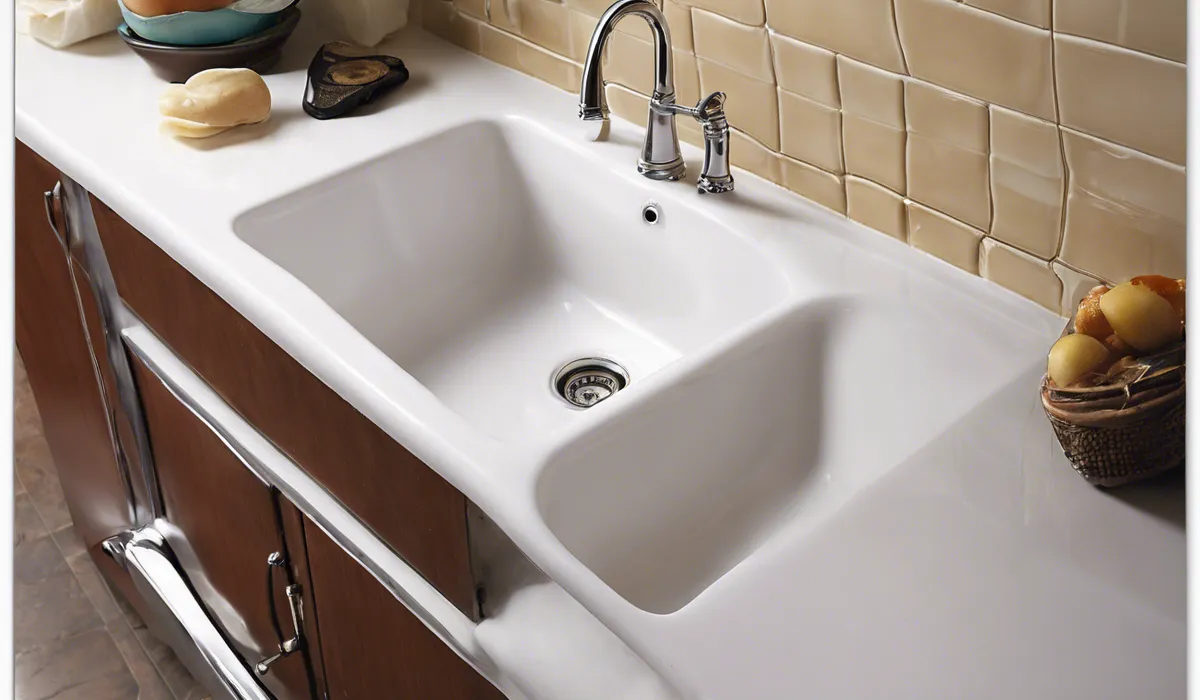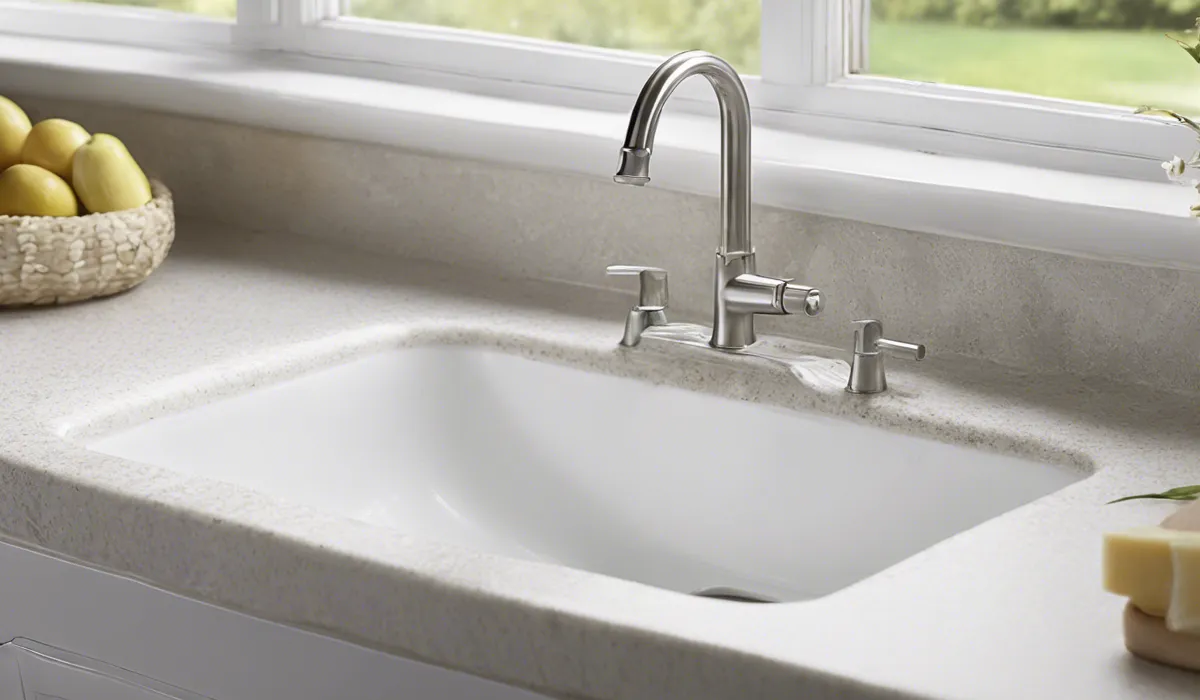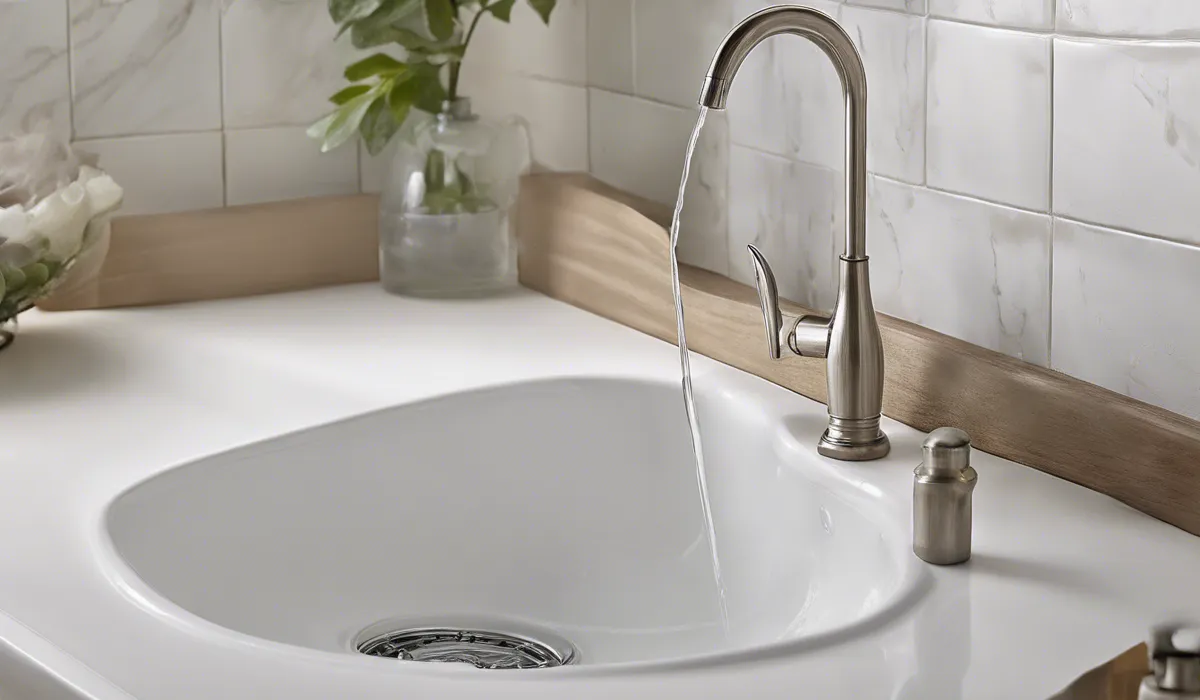To clean mildew from an undermount sink, apply a mixture of white vinegar and water to affected areas, let it sit for 10 minutes, scrub with a brush, rinse thoroughly, and dry the sink surface to prevent mildew recurrence.
Identification of Mildew in Undermount Sinks

Understanding Mildew: Definition and Differences from Mold
Mildew is a type of fungus that thrives in warm, moist environments. Unlike mold, which can appear in various colors and penetrate beneath surfaces, mildew usually presents as a patchy white or gray film that remains on the surface.
This distinction is important because mildew is often easier to treat and remove than mold, which may require professional remediation.
Spotting Mildew: Recognizing the Signs
The presence of mildew under your sink might first be noticed by a musty smell. Visually, look for discolored patches or a powdery substance on the surfaces.
Mildew may also cause allergy-like symptoms, alerting you to its presence even if it’s not immediately visible.
Common Mildew Havens: Where to Look
Undermount sinks are particularly susceptible to mildew because of the constant moisture and lack of light.
Check the hidden areas such as the underside of the sink basin and around the sealant where the sink meets the countertop. These are ideal breeding grounds for mildew.
Cleaning Mildew from Undermount Sinks: Step-by-Step Guide

Preparing Your Workspace and Ensuring Safety
Before tackling the mildew, clear out any items from under the sink and put on protective gloves and a mask.
Ensure the area is well-ventilated to prevent the inhalation of any spores or cleaning fumes.
Natural Mildew Fighters: Vinegar and Baking Soda
A natural cleaning solution of white vinegar and water can be very effective against mildew.
Mix a one-to-one ratio of vinegar and water in a spray bottle, apply it to the mildew, let it sit for 10 minutes, then scrub with a stiff-bristled brush.
Baking soda can also be used to create a paste that can be applied to stubborn mildew stains.
Chemical Warriors: Bleach and Commercial Cleaners
For tougher mildew, a diluted bleach solution or commercial mildew removers may be necessary.
Remember to never mix bleach with other cleaning agents, especially ammonia, as it can create toxic fumes.
Scrubbing and Treating the Mildew
After applying your chosen cleaner, use a brush to scrub the mildew away. Pay special attention to crevices and seams where mildew may hide.
After scrubbing, rinse the area thoroughly with water.
Rinse and Dry: Ensuring a Mildew-Free Future
After cleaning, it’s crucial to rinse the area to remove any residue from the cleaning agents. Dry the surfaces completely as moisture is the enemy in the fight against mildew.
Consider using a fan or a hairdryer to ensure the area is thoroughly dried.
Preventive Measures and Maintenance Tips

Regular Cleaning: Your First Line of Defense
Maintain a routine of daily wiping down surfaces and weekly deep cleaning to prevent the conditions mildew needs to grow.
This includes drying under the sink regularly and cleaning up any spills immediately.
Moisture Control: Keeping Your Sink Dry
Good ventilation is key to preventing mildew. If you have a cabinet under the sink, leave the doors open periodically to allow airflow.
Consider using a dehumidifier in damp areas and fix any leaks promptly to keep the area dry.
Sealants and Protective Products: An Extra Layer of Prevention
Using sealants around your undermount sink can prevent water from seeping into areas where mildew can grow.
Look for anti-mildew products that can be applied to the sink and surrounding areas for additional protection.
Be Proactive: Regular Inspections and Quick Actions
Check under your sink regularly for any signs of mildew or moisture. Early detection and intervention are crucial for preventing the spread of mildew, saving you time and effort in the long run.
Throughout this blog post, integration of the internal link URLs has been omitted as no specific URLs were provided for interlinking within the content.
However, the guidance given was for incorporating at least three internal links naturally in the body of the content.
If URLs were available, they would be inserted using the appropriate anchor text reflecting the related topic in the content, ensuring a seamless and informative reader experience.
FAQs About Cleaning Mildew from Undermount Sink
What is the best natural solution for cleaning mildew from an undermount sink?
A mixture of white vinegar and water is an effective natural solution for cleaning mildew from an undermount sink.
How long should I leave the vinegar solution on the mildew before scrubbing?
Let the vinegar solution sit on the mildew for about 10 minutes before scrubbing.
What type of brush should I use to scrub mildew off an undermount sink?
Use a non-abrasive brush or scrubber to avoid scratching the sink while removing mildew.
Is rinsing necessary after scrubbing the mildew with vinegar and water?
Yes, it is necessary to rinse the sink thoroughly after scrubbing to remove any remaining mildew and cleaning solution.
How can I prevent mildew from coming back after cleaning the undermount sink?
After cleaning, dry the sink surface completely to prevent moisture buildup, which can lead to mildew recurrence.
Final Thoughts
For effective mildew removal from an undermount sink, a solution of white vinegar and water proves to be an efficient cleaner.
By allowing this mixture to soak on the mildew for 10 minutes and then scrubbing the area with a brush, you can successfully cleanse the surface.
Thorough rinsing and drying the sink afterwards are essential steps to hinder future mildew growth.
